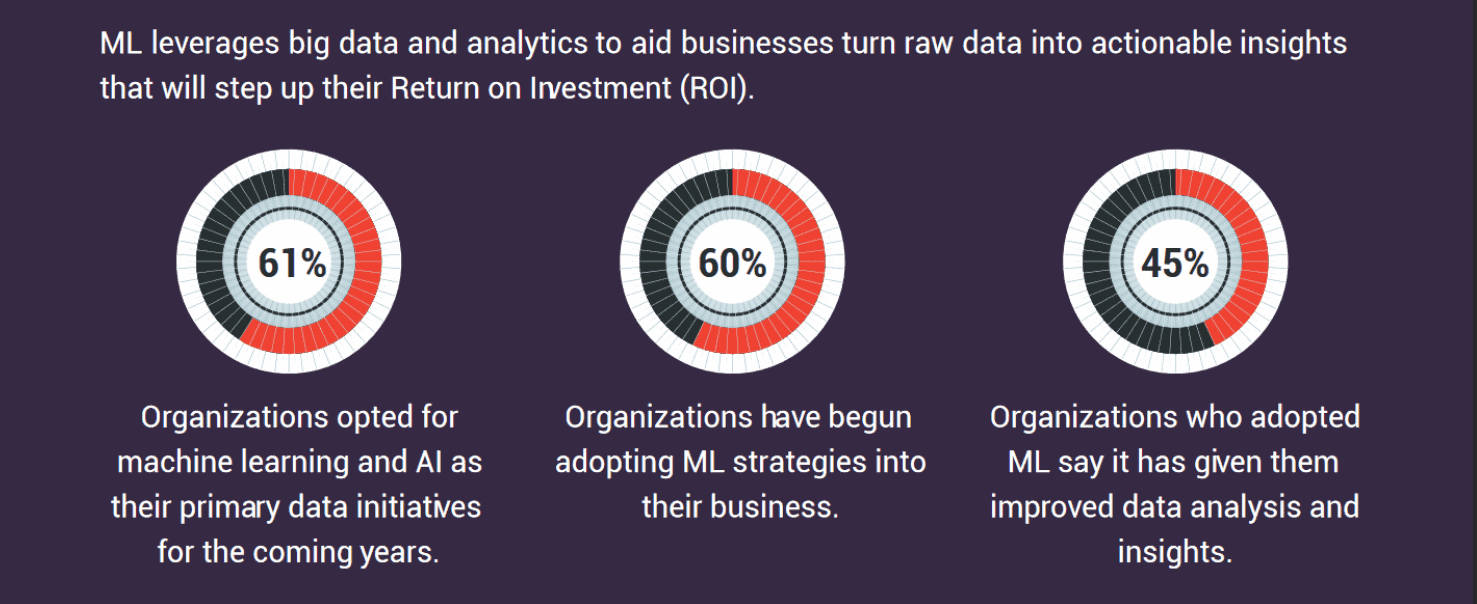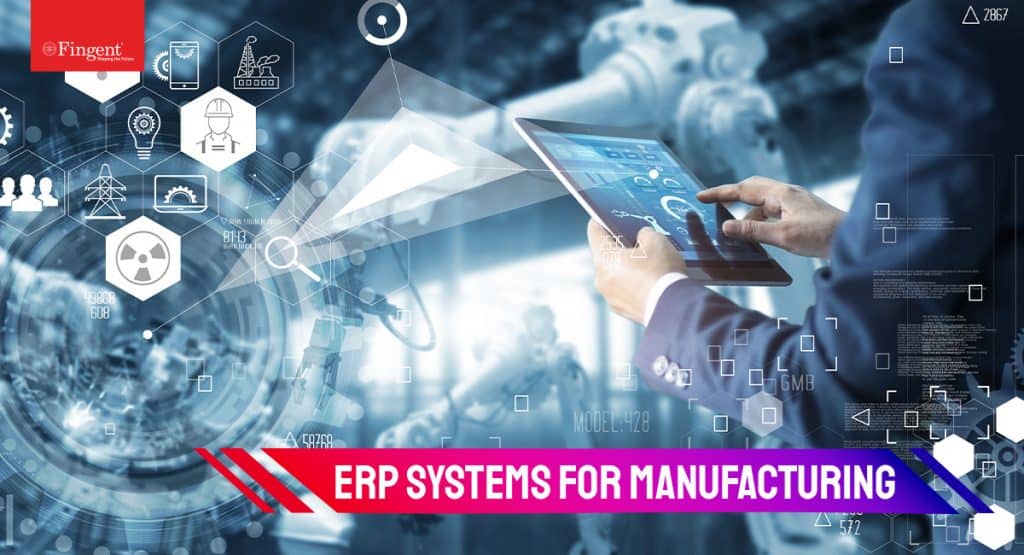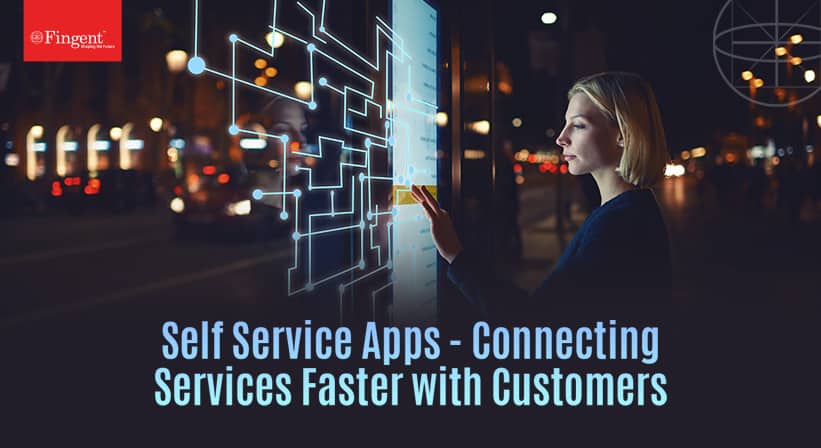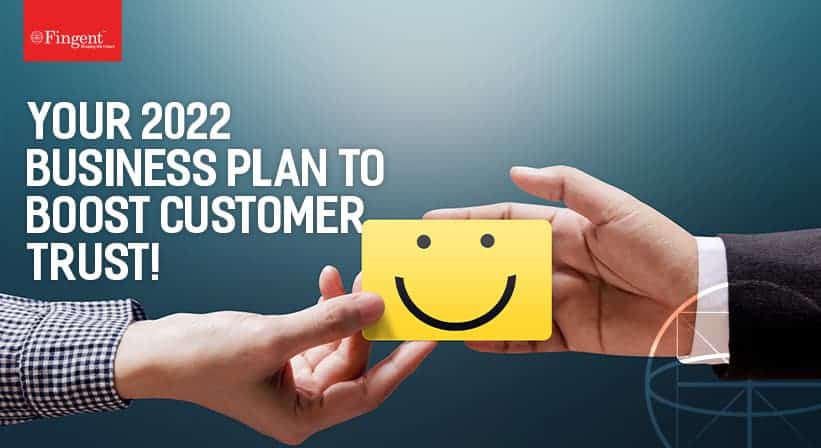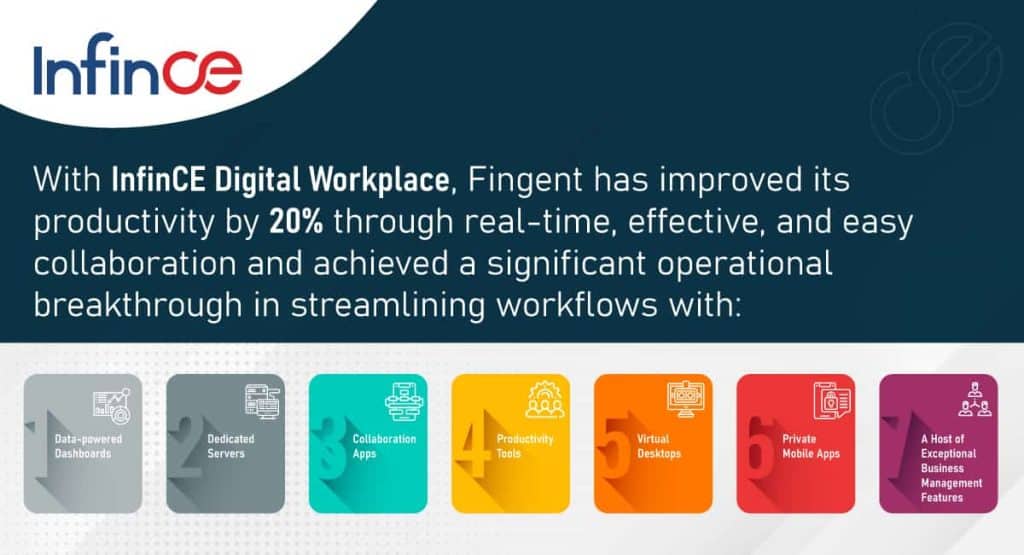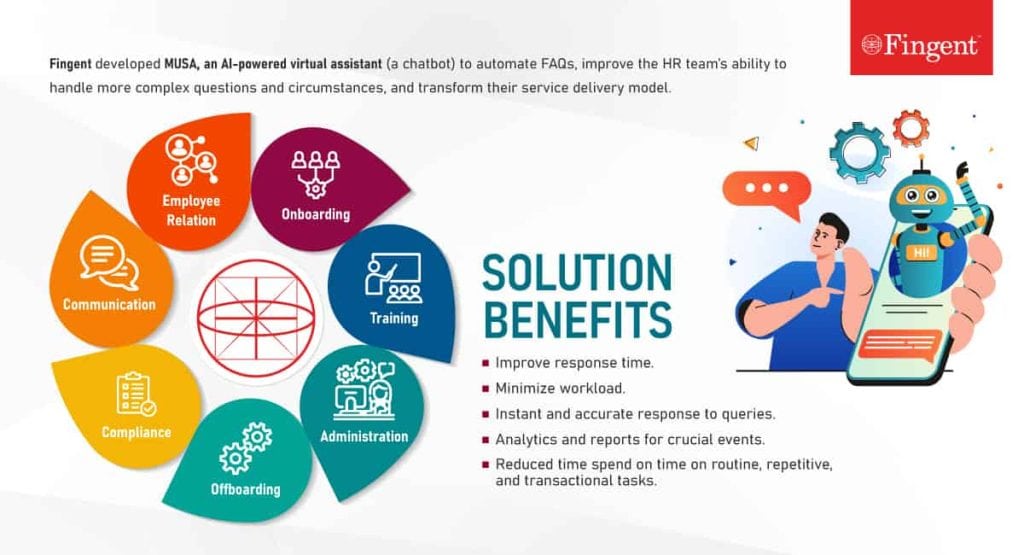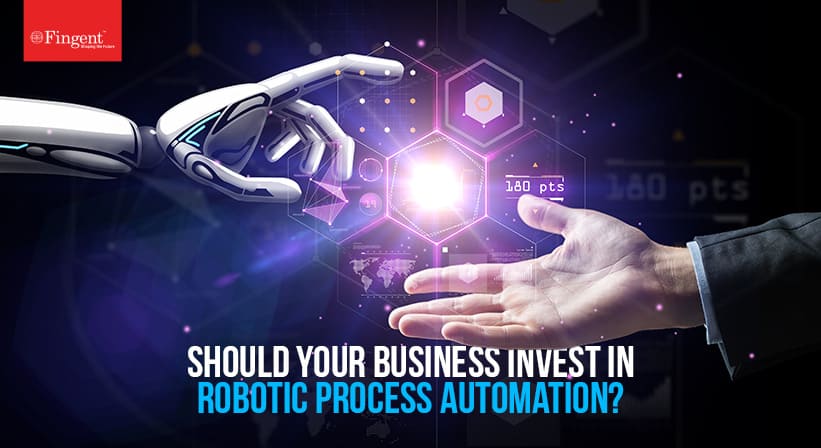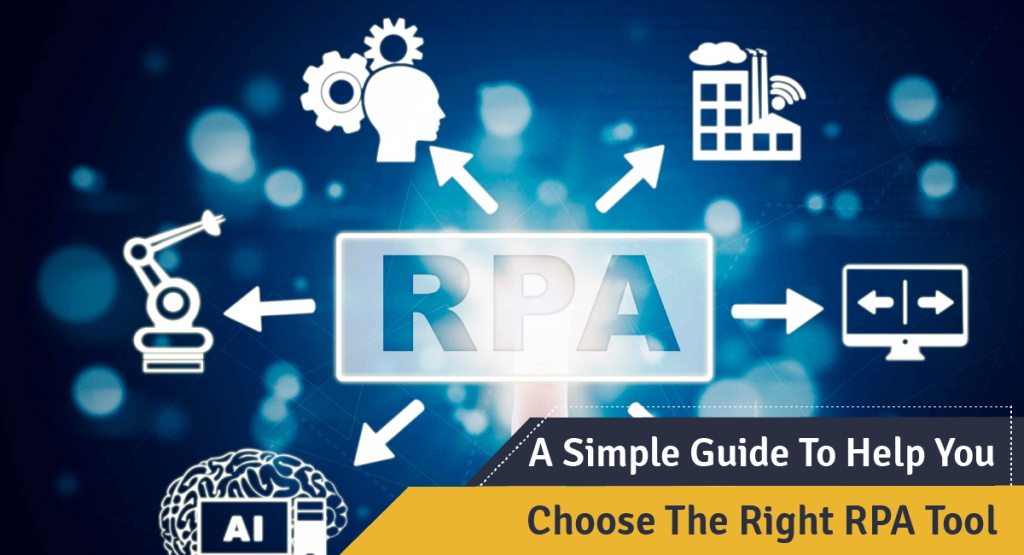Category: Business
‘There is success through many advisers.’ This ancient proverb has proved not just true but very effective and powerful in this digital age. This is precisely what Open-Source Software (OSS) accomplishes. It allows for collaborative development where the community can modify and enhance the source code.
Open-source systems can help businesses adapt quickly to changing circumstances and facilitates controlled upgrades. Integration and maintenance become less of a hurdle. With the wide range of OSS possibilities, businesses are wise to tap into this huge potential for building a robust, secure, and yet, cost-effective infrastructure.
This blog will help you gain an in-depth understanding of how open-source can power your digital transformation journey!
How Open-Source Software Powers Digital Transformation
Vendors today provide various software solutions indispensable to a business’s software strategy. But finding the right software solution that caters closely to an organization’s needs has always been challenging! Meanwhile, OSS helps businesses build and maintain their IT ecosystem and enables sourcing highly creative developers with hard-to-locate skills. Engaging with domain experts and making their contribution to the OSS bank helps developers find satisfaction and boosts creativity. Judicious use of OSS can be of great benefit to any business.
Most IT leaders believe that OSS is either “very important” or “extremely important” to the enterprise software strategy. How do we know that? In 2021, developers downloaded over 2.2 trillion open-source packages. That is a 73% increase.
Read more: How to Ensure Safe Use of Open Source Libraries
Here are more reasons to justify this statement!
1. OSS Can Serve as A Ramp to The Future
Irrespective of whether you are a small business with limited resources or an established enterprise with an established IT ecosystem, open-source software’s ability to supply code that can be easily changed and customized to your specific needs is invaluable. Many businesses are turning to AI and blockchain to better understand customer needs and work towards fulfilling them. Open-source code can not only hasten the process but also ensure efficiency.
AI, ML, and AR/VR could feel like the proverbial butterfly always out of reach, and more so if your business does not have a well-established IT team. OSS can then serve as your ramp to the future. Your vendor or coder could build on the resources available to ramp up your IT capabilities and reach your desired situation.
2. OSS Can Be a Beacon for Talent
OSS provides coders and developers with access to code written by experts or extremely creative pioneers. This would be an immersive learning exercise. At the same time, experienced engineers could interact with others in their community, freshening their skills while keeping up with the latest in the IT industry. This exposure would, in turn, influence their recruiting and training activities.
The OSS is also a repository of “glueware.” It allows software engineers to create things outside their immediate area of expertise. While it requires ingenuity and skill to glue parts together to make a whole system, OSS provides not just the individual parts and the “glue” required to fix them. It is a new method of looking at the design, resulting in greater satisfaction and a sense of accomplishment.
3. OSS Can Build Engineering Discipline
Open-source projects have very clear frameworks. There is structure and good practices such as separation of concerns, abstraction, and isolation. A business of any size would benefit from following the same discipline in setting up its systems.
Maintaining clear standards of operability ad interoperability is another advantage. Using OSS ensures that the same standards are followed. Businesses do not have to invent standards and frameworks but can build on the foundation provided by OSS.
4. OSS Can Improve Your “Ilities”
Scalability, availability, and reliability – are just a few of the many aspects that OSS can help improve. Utility to ensure efficiency and avoid duplicating work can also be added to the list. Developers or vendors would likely prefer importing sections from a tried and tested OSS repository than building from scratch.
Read more: Artificial intelligence and Machine Learning For Faster and Accurate Project Cost Estimation
Dimensions of Open-Source Software
OSS boosts the digital transformation of businesses. It is good for businesses that lack the resources to meet the needs of IT development. OSS can yield different variations by its modularity. Consider a few pros and cons of OSS:
- Price: The price is very low to zero. However, one must consider the need for support, customization, and hosting while considering the cost of using OSS.
- Source Code: Full access to the source code helps developers evaluate the quality of the software and customize it to the needs of the business.
- Functionality: While individual systems from the OSS may be limited, they can be easily ramped up to serve all business needs.
- Modularity: OSS is modular. Hence it prompts the engagement of several experts in building a specific IT system.
- Development: OSS code is developed worldwide by motivated developers from a wide range of roles and functions.
- Distribution: OSS code is distributed over the internet, which is fast, efficient, and cost-effective.
- Licensing: A range of OSS licenses specify how the code can be used, modified, or redistributed. However, certain restrictive licenses only support the limited use of the OSS code.
- Monetization: Offering support services to help integrate the system, train users, and fix bugs is one way to monetize OSS. Offering to work out the deployment of OSS systems and taking care of backups, upgrades, and downtime is another way to monetize OSS.
Is Customization A Smarter Choice With Open Source?
Remember that OSS is another tool best suited for certain tasks and not so well suited for others. OSS might not be the best choice for your strategic activities or initiatives contrary to your cultural norms. Certain projects on OSS might have too high a level of uncertainty or too little support.
This does not mean that OSS should be put out of the picture. Do you need to adapt quickly to the fast-paced development in certain domains? Do you need greater effectiveness in attracting and retaining talent? Do you need a solution that requires utility, quality, and speed? OSS can help you in all these scenarios.
Read more: Odoo Migration: Why Is It Crucial and How to Do It Seamlessly!
How Can Fingent Help?
Fingent can leverage open-source technology to quickly develop your customized, dynamic business application. Our experts use PHP, AngularJS, jQuery, Magento, and several other open-source technologies to develop, implement and support a wide range of open-source technologies and resources. Our extensive experience working with open-source tools helps ensure that we can provide our clients with customized, innovative solutions quickly and efficiently without compromising on quality.
Intrigued to learn more about how we can help you develop and leverage the best business software solutions with open source. Connect with our experts now!
Stay up to date on what's new

Featured Blogs
Stay up to date on
what's new



Talk To Our Experts
Machine learning is changing the face of everyday life, science, and business. It is revolutionizing all industries, from advancing medicine to powering various cutting-edge technologies. Though Machine learning (ML) was a part of AI’s evolution until the 1970s, it evolved independently. It has become a chief response tool for cloud computing and eCommerce.
The goal of machine learning in business is to adapt to new data independently and make decisions and recommendations based on thousands of analyses. Machine learning enables systems to learn, identify patterns and make informed decisions with minimal human intervention.
Today, ML is a necessary aspect of modern business. It uses algorithms and neural network models to improve the performance of computer systems. Machine learning in business and manufacturing is enabling organizations to achieve notable strides. These strides include increased performance and efficiencies, improved processes, and enhanced security.
This article will discuss the benefits of machine learning in business and its use cases.
Remarkable Benefits of Machine Learning for Businesses
According to Fortune Business Insights, the global market size for machine learning in business is expected to grow to USD 209.91 billion by 2029, exhibiting a CAGR of 38.8% during the forecast period. ML has been and continues to scale operations tremendously. Across industries, ML has led to a boom in affordable data storage and faster and more reliable computational processing.
Here are six remarkable benefits of machine learning in business:
1. Automation for better decision-making
Most businesses find themselves wasting precious time sorting through duplicate and inaccurate data. Such businesses benefit from using the predictive modeling algorithms of ML in their processes. Such a process will understand duplicate inaccurate data and distinguish the anomalies. It enables the organization to avoid inaccurate reporting that can result in poor customer retention.
Instead, this will allow businesses to use their accurate database to detect wasted costs, missed opportunities for sales, and revenue capital. In addition, organizations can overcome challenges and risks that arise due to miscommunication or poor performance metrics. Thus, businesses can streamline their operations and improve decision-making which could be translated into better ROI.
2. Increased scalability with minimum expense
Semi-supervised machine learning algorithms can help organizations leverage useful insights from customer profiles and enable them to view their brands from customers’ perspectives. Doing so will equip organizations with relevant insights to build their brand by improving their products and services.
3. Predictive maintenance
Predictive maintenance that ML aids manufacturing firms’ power to follow best practices that lead to efficient and cost-effective operations. The historical and real-time data predict problems and stipulate strategies to solve those problems. Plus, workflow visualization tools can eliminate issues and unwanted expenses incurred due to those issues.
4. Financial analysis
ML can greatly assist as it gathers and analyzes large volumes of quantitative and accurate historical data. It is used for portfolio management, loan underwriting, fraud detection, and more.
5. Personalization
Using machine learning in business will allow organizations to know their customers better and provide them with a more personalized customer experience. Organizations no longer need to rely on guesswork because ML models can process different types of information collected from numerous sources and provide relevant data about their customers.
6. Cybersecurity
ML technologies can improve cybersecurity to solve cyberattacks once and for all. Empowered by ML, intelligent security programs can gather and process data about cyber threats and respond to them in real time. ML models can detect the slightest deviations in patterns and flag them. Or destroy an attack in its nascent stage.
Read more: Can Machine Learning Predict And Prevent Fraudsters?
Top Use Cases
Machine Language has made its mark across industries and found a place in many different applications. Here are some top use cases:
1. Enhanced social media features
Businesses can use machine learning algorithms to create attractive and effective social media features. For example, ML algorithms in Facebook enable it to identify and record a person’s activities. These activities include records of chats and the amount of time that person spends on each post. It uses this data to determine what kind of friends and topics may interest that person and accordingly make suggestions.
Read more: Why Time Series Forecasting Is A Crucial Part Of Machine Learning
2. Product recommendation
Product recommendation is an advanced application of machine learning techniques. It has been the most popular application of almost every eCommerce website today. This technique allows websites to track a consumer’s behavior based on their previous purchases, search patterns, and cart history. It enables the website to make apt product recommendations to that consumer.
3. Recognition
Image recognition is one of the most significant and notable ML and AI techniques. It is adopted further for pattern recognition, face detection, and face recognition.
4. Sentiment analysis
Sentiment analysis is a real-time ML application. It determines the emotion or opinion of the speaker or the writer. For example, a sentiment analyzer can detect the thought and tone of a written review or an email. It can analyze the review-based website, decision-making applications, and more.
5. Access control
Most large businesses are actively implementing ML models to determine the level of access an employee should be granted. This application of machine learning can ensure the security of the organization.
6. Bank Domain
Banks are using ML to prevent fraud and protect accounts from hackers. Machine learning algorithms determine what factors to consider in creating a filter to prevent an attack.
Read more: Machine Learning – Deciphering the most Disruptive Innovation
How Fingent Can Help with Deploying the Best of ML
Leveraging the capabilities of machine learning in business can open the door to many opportunities. It is wise for any organization to take advantage of ML rather than lag behind competitors. However, we understand if you have questions. That’s why Fingent software development experts are here to help you. We can deploy the best machine-learning models efficiently and smoothly.
As a partner, Fingent can work with your team as you take on digital initiatives for sustainable business growth. We enable our clients to make data-driven decisions by efficiently deploying machine learning in business. Our cost-effective services will save you a considerable amount of time and money.
Furthermore, we do not follow a one-size-fits-all strategy. We provide custom software development services that cater to your needs. Therefore, look no further if you are looking for a reliable, efficient IT partner to deploy the best machine-learning models.
Stay up to date on what's new

Featured Blogs
Stay up to date on
what's new



Talk To Our Experts
From the mundane to breathtaking, AI is disrupting virtually every business process in all sectors. People are ceasing to associate Artificial Intelligence with science-fiction dystopias as Artificial Intelligence (AI) is taking more commonplace in our daily lives. While such acceptance in mainstream society is a new phenomenon, it is not a new concept in business. Today, AI has become imperative to maintain a competitive edge.
This guide will help business owners who are serious about maintaining a competitive edge in their business sector by adopting AI.
Rising Need for Adopting AI In Business
Did you know that 52% of companies accelerated their AI adoption plans after the pandemic? Why?
Artificial Intelligence in business is seen as a supporting tool. It is adept at processing and analyzing a trove of data much faster and more efficiently than a human brain can. Since AI can synthesize courses of action and present them to the human user, businesses can use AI to help investigate the probable consequences of each action. That way, businesses can streamline the decision-making process. This is what makes AI valuable throughout many industries.
Artificial Intelligence is a form of software that can make decisions independently. It can act even in situations not foreseen by programmers. AI has a wider latitude of decision-making capabilities than traditional software – whether it is simply helping visitors or performing a task as complex as monitoring a wind turbine to predict its maintenance.
Read more: Conversational AI: Reimagining Customer Experiences
How To Identify If Your Business Needs AI?
AI software and tools can make business processes much simpler and more effective. Besides, implementing AI in business ensures cybersecurity defense, powers customer service, and more. But how do you know when you must adopt AI in business? Here are a few scenarios:
Scenario 1: Do you need to enhance your customer experience?
Are you struggling to provide your consumers with quick, easy, and personalized solutions? AI-powered digital assistants can help your business resolve customer queries by imitating human conversation. Chatbots are among the most promising trends in customer engagement and customer experience. Perhaps most business owners realize how imperative this AI technology is to their business. Perhaps that is why the chatbot market is set to reach 1.25 billion USD by 2025.
Scenario 2: You know the value of sentimental analysis but do not know how to leverage it.
Businesses use sentimental analysis to monitor and analyze customers’ opinions and emotions from various texts on a website, social media, and product or service comments. Skimming through large amounts of data to churn out customers’ sentiments can be daunting. All thanks to AI-assisted sentiment analysis, you can now quickly understand how your customers feel about your services or products.
Scenario 3: Your business has suffered due to inaccurate forecasting.
Accurate sales forecasting helps businesses predict future sales for long-term business growth. It can also enable the detection of potential problems to avoid them. Implementing AI-based CRM software can help detect how each data element relates to sales performance.
Scenario 4: You have a great online presence but an awful in-store experience.
If that describes your business, it is time to adopt AI to provide the next level of a personalized in-store experience. AI can enable instant access to products or services and contribute to smarter buying decisions.
A Quick Guide to Implementing AI For Your Business
AI applications can be used in many ways depending on organizational needs and the business intelligence (BI) insights derived from the data collected. Here are some tips to explain the steps businesses can take to ensure their implementation is a success:
1. Know your options.
Find out your options and what AI can and cannot do. This will help you decide if you want to add specific AI technology or change the entire app.
2. What is your business goal?
Working on an ‘end-first’ process will help refine the list to select specific features or capabilities that best suit your business goals.
3. Find out how AI can benefit the end-users
This is crucial as it gives you the two main objectives for a successful implementation. Then, choose the software and hardware you need to make this process a reality.
4. Evaluate your internal capabilities
You need to consider if you have enough skilled employees in-house who can manage the process and if you have the budget to outsource it.
5. Choose between building or integrating the system
Remember building an AI system from scratch can take several months. On the other hand, if you choose to use a premade system, your AI partner will help install the software app, train your staff, and fulfill your business needs.
6. Test system
Testing the system for a predetermined time will help you understand if the clients are more satisfied, and if the employees work more efficiently.
7. Choose the right partner
A good AI partner will be clear about the offer, value, and terms of cooperation.
8. Make refinements
After you gather a reasonable amount of data evidencing the success of an AI solution, you can start making refinement changes to the solution.
Watch more: How Artificial Intelligence Can Enhance Your Customer Experience!
Avoid 4 Common Mistakes While Implementing AI
A well-considered plan can lead to success, but a mistake can cost you considerably in terms of time and resources. Here are four common mistakes to watch out for when implementing AI:
- Not applying AI to the right use cases: If AI is incongruous with your business goals, your time and resources will be wasted
- Not diligent in hiring the right talent: Hiring the right AI team is like putting together the right football team that can win. Hire candidates with specialized skill sets and experience that match your business needs.
- Ignoring data: Ensure all teams are responsible for organizing, vetting, and maintaining data.
- Inadequate intervention: Inadequate intervention could result in AI recommendations that hinder business objectives. Hence, ensure interventions are scalable and repeatable.
How Fingent Can Help You With Personalized AI Software Development
Artificial Intelligence is for every future-oriented business. How exactly you will use AI depends on your business goal and how well it was implemented. At Fingent top custom software development company, the AI developers are equipped to design intelligent solutions to help solve your business problems, automate tasks, and improve customer experience.
Our suite of AI solutions includes data capture and processing. Our AI developers are also proficient in analytics, multi-platform integration, and ML solutions.
Let us help you reach your business goal with intelligent AI-driven solutions. Give us a call today.
Stay up to date on what's new

Featured Blogs
Stay up to date on
what's new



Talk To Our Experts
Historically, SAP solutions have required abundant resources and time to implement. However, this investment of time and resources pays dividends, as organizations that successfully implement the latest SAP solutions gain a distinct advantage within their industry. This is particularly true when discussing the latest SAP solution, SAP S/4HANA. The evolution of cloud technologies fueled the rise of this next-generation enterprise resource planning (ERP) solution.
This definitive guide explores SAP S/4HANA, so business leaders can determine whether this ERP solution is the wisest investment for their organizations.
Why Modern Businesses are Considering SAP S/4HANA
SAP S/4HANA is the culmination of decades of product development innovation. This expertly designed ERP incorporates simplified architecture and a robust digital core. Additionally, it is equipped with artificial intelligence and machine learning capabilities to provide clients with access to truly revolutionary tools and functionalities.
Deploying SAP S/4HANA maintains the unparalleled level of business process coverage that SAP products are known for, while simultaneously allowing users to tap into the rapidly scalable computing power available via cloud services.
In simple terms, SAP S/4HANA eliminates the most commonly cited pain points associated with ERP implementation. Specifically, SAP S/4HANA can be implemented faster than legacy options and at a less cost-prohibitive price point, especially when users leverage the platform’s “best practices activations.”
Clients no longer have to invest in an abundance of on-premises computing resources but instead can leverage cloud-based alternatives.
Read more: It’s Time To Transform Your Business For The New Digital Age – Rise With SAP
Top Benefits of Implementing SAP S/4HANA
By transitioning to SAP S/4HANA, organizations can experience benefits such as:
1. Enhanced Ability to Adapt
With SAP S/4HANA, businesses will be better prepared to adapt to rapidly changing conditions within their sector. Additionally, the platform will help companies adopt the latest business models. Cumulatively, these benefits will make businesses more agile and resilient.
2. Improved UI/UX with Fiori
When SAP S/4HANA is paired with Fiori Innovation, the user experience is significantly enhanced. Fiori is the standard created by SAP for the use of design conventions and rich software elements.
3. Faster Deployment
In the past, deployments of legacy SAP ERP solutions could take years. Now, SAP S/4HANA migrations can be performed in mere months or weeks. Conversions from the ECC platform to SAP S/4HANA can also be performed in record times.
This reality allows clients to decrease their time to value and begin using their new software faster than ever.
4. Optimal Scalability
Transitioning from on-premises solutions to cloud-based options maximizes the scalability of ERP technologies. As businesses grow and expand, their SAP S/4HANA ERP software can evolve with them.
Before the release of S/4HANA, expanding ERP capabilities required businesses to invest in incredibly costly on-premises equipment. SAP S/4HANA makes this scalability challenge a distant memory.
5. Decreased Time to Market
One major hurdle to digital transformation was lead times. When businesses explore digital transformation investment opportunities, options that take years to go live are naturally not all that appealing to decision-makers.
As a result, some businesses settle on lesser solutions or rush through the deployment process, only to experience lackluster results with their new investment.
SAP S/4HANA addresses these recurring challenges by offering an expediting deployment process. While the efficiency and efficacy of the deployment depend primarily on the skill of the team overseeing the transition, capable SAP partners can implement S/4HANA far faster than its predecessors.
This rapid deployment is a significant selling point for businesses that need to achieve a condensed time to market and a fast time to value.
6. Advanced Analytics Capabilities
SAP S/4HANA’s dynamic array of reporting and analytics tools can provide organizational leaders with the insights they need to make data-driven decisions.
Decision-makers can view these data points through their preferred lens by customizing their reporting dashboard. SAP S/4HANA provides real-time updates, so business leaders can access the most accurate information possible.
In addition to its advanced analytics capabilities, SAP S/4HANA facilitates process automation via artificial intelligence software. Businesses can implement end-to-end automation, which reduces the workload on staff while simultaneously enhancing organizational efficiency.
Signs It’s Time to Transition to SAP S/4HANA
Waiting too long to upgrade ERP technology can turn a solution that should make businesses more efficient into a financial burden. If businesses are unsure whether it is time to transition to a leading-edge solution like SAP S/4HANA, they should look for indicators such as:
1. Lack of Standardization
When developing SAP S/4HANA Cloud, the company took the time to listen to its client base. What SAP found was that many clients were clamoring for product standardization. SAP’s clients are most often established companies that are facing very complex problems. They were early adopters of the Cloud ERP, but now these entities need to scale quickly to continue to innovate within their respective industries.
Antiquated options offered little or no standardization, making implementing and maintaining ERP software tedious, especially for those businesses with on-premise systems. SAP S/4HANA offers the level of standardization that clients were seeking while still providing them with the opportunity to customize their solutions.
2. Out of Compliance
Organizations that operate in closely regulated sectors must always be mindful of compliance requirements. The consequences can be serious if an organization clings to a legacy solution long after it has exceeded its optimal service lifecycle.
When compliance is a concern, businesses should promptly look to upgrade their legacy system with a modern alternative like SAP S/4HANA.
3. No Vendor Support
While product vendors support their technology products, they cannot support everything perpetually. As new products roll out, vendors will need to eventually discontinue offering support for previous iterations of software and ERP solutions.
You have two options when the vendor no longer supports your company’s preferred software suite.
The first involves maintaining the product in-house via cobbled-together solutions. This approach can quickly lead to diminishing performance and increasing maintenance expenses. The second, more pragmatic option is to upgrade to the latest available solution.
4. Costly to Maintain
All business moves, including replacing a legacy ERP solution, are boiled down to a risk vs. reward assessment. Much of this assessment focuses on the potential value benefits of making the switch versus the transition cost.
When legacy software becomes excessively costly to maintain, making this decision is that much easier. Antiquated technologies not only deliver less value over time, but they are also costly to keep up and running. If your organization has encountered this conundrum, it is a sure sign that it is time to upgrade.
S/4HANA Conversion vs. S/4HANA Implementation
There is an important distinction between migration or conversion and implementation for S/4HANA. Conversion involves transitioning all data and files from your existing SAP ERP solution (like ECC) to S/4HANA. Put simply, you are transforming your existing ERP solution into a variant of SAP S/4HANA.
During a system conversion, businesses will need to migrate their databases to SAP HANA 2.0. From there, they will need to convert their data to the new SAP S/4HANA model. In addition, the company must upgrade its software, which will involve replacing legacy application code with the code for SAP S/4HANA.
On the other hand, a new implementation involves building out SAP S/4HANA and then transitioning to the new system. The implementation process can be performed via a phased rollout, an incremental transition from legacy ERP to the new solution. Alternatively, businesses have the option to take all business units to SAP S/4HANA during a single massive rollout.
Both processes can be incredibly involved. Therefore, you should carefully analyze each approach’s benefits and choose the best method that best aligns with the needs and goals of your organization.
S/4HANA Conversion
Businesses that select a conversion strategy will see less significant downtime as the conversion is a one-step process. Choosing a conversion or new implementation is determined by your business type (if you are based in IT or finance, for instance), your long-term strategy and how many other systems are connected to your influencing system.
Prepare for Your Conversion
Before any new implementation or conversion projects, preparing your team and system for the changes is essential. Poor preparation can increase downtime, which decreases the effectiveness of the conversion.
Caring for your financial data includes preparing your team for new parallel accounting and document split capabilities via conversion. Also, verify the compatibility of your add-ons to ensure that they can handle the transition.
Ready your team for test cycles and have a plan in place so that each member knows their role to follow the guidelines.
Qualify a Baseline Plan
Your conversion and migration partner will assess your system to help determine the baseline plan for your system landscape. They will walk you through optimizations as well as the quality assurance systems and processes and which development system is best for you. They’ll also conduct a dress rehearsal to minimize the downtime and optimize the time your system has.
Consider Your Add-Ons
Most SAP systems have third-party add-ons as some were used to enhance the existing SAP architecture. Before starting a conversion, locate the vendor of each add-on and verify its compatibility with the SAP S/4HANA system. You’ll also want to check that you’ll still need each add-on. The vitality of the SAP S/4HANA product may eliminate the need for some third-party enhancements.
Read more: Low Code/No Code Development with SAP BTP: How It Is Turning the Future of Enterprise Resilience
Tips for Choosing the Best S/4HANA Migration Partner
When searching for the right S/4HANA migration partner, organizations like yours should consider factors such as:
- Scope of services offers
- Level of experience
- Industry reputation
- Whether the organization offers ongoing support
Of the above factors, industry reputation is of particular concern. While virtually any SAP 4/SHANA migrations partner can claim to be “top-notch,” not all of them are. Feedback from past clients serves as a valuable form of social proof that can help you determine whether a provider is right for your organization.
Fingent is Your SAP Partner
Whether you need assistance with SAP S/4HANA implementation or migration, Fingent is the ideal partner to oversee this complex process. Since 2003, Fingent has been delivering exceptional value to our clients while helping them gain distinct advantages in their respective industries.
Past clients have praised us for our quality of service, ability to expedite time to market, cost-effectiveness, and tailored approach. To learn more about our SAP S/4HANA solutions, contact Fingent today.
Stay up to date on what's new

Featured Blogs
Stay up to date on
what's new



Talk To Our Experts
Customer Experience – Two words that could make or break your business.
Today, customers expect businesses to provide nothing short of an excellent customer experience whenever and however they shop. This is going to be the main differentiator between you and your competitors. The race to own customer experience is on!
Some businesses are learning this the hard way, but you don’t have to. The solution is right here – Technology. Through this article, we want to help you understand how technology can improve customer experience. We will also discuss top technology trends to help your brand beat the competition.
But first, let us explain why customer experience matters.
Does Customer Experience Matter?
Did you know that 66% of customers expect companies to understand their needs and expectations?
Gone are the days when an unhappy customer used to complain directly to the brand. Today, they choose to complain to the rest of the world through social channels such as Twitter, Facebook, Instagram, and more. Creating a powerful and memorable customer experience is more complicated than ever in such a scenario.
While that is true, it is also true that these customers share positive customer experiences on these platforms as well. 71% of customers recommend a product or service just because they received a “great” customer experience.
As a brand, you may define your brand’s promises. However, the customer decides whether or not your brand delivers on its promises. According to market research by Gartner, customer experience drives over 60% of brand loyalty.
To satisfy customers, most businesses hire and train good people. But that is not sufficient. They need tools that will help them deliver a top-notch customer experience and make them want to come back to you. Using technology for customer experience can build your brand through satisfied customers.
That takes us to the next intriguing question: How does technology improve customer experience?
How Does Technology Improve Customer Experience?
Technology for customer experience gives customers unlimited access to information, allowing them to demand products and services whenever they want. As the speed of technology to enhance customer experience accelerates, businesses must evolve quickly. Brands that use technology to enhance customer experience will thrive, but you can be sure that those that are slow to react will not survive.
Here are three key ways in which technology enhances customer experience:
1. Increased opportunities
Using smartphones, customers can research products, raise queries, and purchase products or services no matter where they are and what they are doing. A study revealed that consumers in the UK spend over 22.8 billion pounds per year on online shopping while using public transport.
With consumers becoming hyper-connected, businesses need to leverage increasing opportunities to engage new and existing customers. Technology can help companies integrate all marketing channels to deliver a cohesive customer experience irrespective of their channel. Technology can help you use customer data effectively to deliver seamless experiences.
2. Reach every audience segment
According to a Google report, 90% of online shoppers use more than one device to shop. A shopper may use one device to search for a product and another to check the pricing and complete the purchase.
Businesses need to be available with the right messaging at the right time. Technology for customer experience will help you reach your customers on any device. Technology can enable you to provide contextually relevant experiences that engage customers in the right place, at the right time, and with the right message.
3. Communicate better
Most customers switch brands because the purchasing process is too difficult. Technology offers solutions to reach customer demands. AI-powered chatbots enable your brand to communicate better with your customers.
Since chatbots provide detailed records of conversations with customers, you can use that data to analyze to reveal insights on consumer pain points. You can use these insights to improve products and services.
Top Technology Trends That Improve Customer Experience
1. AI chatbot
AI chatbot is restructuring the way brands communicate with their customers. These conversational AI chatbots are responsible for creating a personalized customer experience, making sentiment analyses, and more. Consider a use case:
Fingent helped one of the oldest state universities to develop an AI-driven ecosystem that allows students to interact with an AI chatbot (teaching assistant). These are built to be trained and allow instructors to upload the content that students need. These chatbots can manage student queries and allow for keyword and tag searches of teaching material.
2. Virtual reality
Virtual reality is a game-changer enabling customers to educate themselves about your company. Plus, VR redefines how your sales reps understand customers, increasing their empathy and enabling them to suggest better solutions to their issues.
Fingent recently built a highly interactive visual medium to enable medical students to quickly gain efficiency in stand medical procedures.
3. Augmented reality and 3D configuration
Augmented reality is considered a boon to improving the digital customer experience. It gives customers a clear picture of your product, helping in quicker purchasing decisions.
Fingent helps build interactive mobile apps that enable 3D purchase decisions. It also develops agnostic web solutions for eCommerce to better use AR capabilities.
Fingent- A Perfect Partner to Create Custom Technology Solutions To Enhance Customer Experience.
The impact of technology is a powerful catalyst for change, and the speed of that change is getting faster and faster. Fingent can help you identify technology trends and capitalize before it is too late.
You must acknowledge and meet consumer demands for your business to increase market share and stay relevant. Marrying customer service and technology can drive customer delight.
Fingent brings you deep expertise in experience strategy and design, harnessing best-in-class solutions. We can help you drive transformation across the customer lifecycle, sales, marketing, and more.
Fingent top custom software development company is equipped to provide support across channels. Our quick and easy setup allows you to cut time and lower costs. With the help of AI and automation, we can route your tickets to the right agent and boost customer satisfaction. Find out more about us and chat with our experts to see how this can be done.
Stay up to date on what's new

Featured Blogs
Stay up to date on
what's new



Talk To Our Experts
Manufacturing has long been a driver of global prosperity and economic growth. We all see astounding growth as the manufacturing industry evolves and keeps up with changing consumer needs.
This has led industry leaders to shift their focus from traditional to smart factory technology. A smart factory offers many benefits to operators, managers, and executives of companies in this industry. And yet, a few companies hesitate to start their journey the ‘smart way.’ If you are one of those companies, this article will help you with details and show you how a smart factory can bring its business operations and customer satisfaction to a new level.
Let us begin by understanding what a smart factory is.
What Is a Smart Factory?
Take a manufacturing facility and completely digitize it – that is what a smart factory is. The smart factory is a digitized manufacturing facility that uses digitized manufacturing methods, devices, and systems to continuously collect and share data. This data is used to make informed decisions that improve processes and address manufacturing challenges. The smart factory is a new industrial revolution phase focusing on real-time data, connectivity, automation, and Machine Language.
A smart factory uses the best digital and physical worlds to monitor the entire production line, from supply chain management to manufacturing tools. It can even monitor the work of an individual operator on the factory floor.
Why Is It Smart to Embrace the Smart Factory Movement?
According to a press release by Marketsandmarket, the smart manufacturing market was projected to reach USD 228.2 billion by 2027. It is expected to grow at a CAGR of 18.5% from 2022 to 2027. Then, most businesses consider smart factories highly beneficial and crucial across industries and sectors. Here are some of those significant benefits:
- Measure key performance indicators: A smart factory provides managers with automated data that is accurate. This data gives them the ability to measure key performance indicators more efficiently.
- Think ahead better and faster: Smarter predictive maintenance allows managers to predict and resolve maintenance issues better and faster.
- Efficient demand management: It can forecast more accurately and thus reduce waste enabling efficient demand management.
- Boosted productivity: Managers boost productivity as it can provide seamless data on machine maintenance and potential bottlenecks.
Key Elements of a Smart Factory
There are a few elements that make the smart factory what it is. Understanding these elements will help you see how it fits into your business.
1. Robotics
Robotics is a crucial element of a smart factory. Robotics enables smart material handling and adaptive operations. Besides, robots come with flexible infrastructure that can scale depending on business needs.
2. Big data and IoT
The Smart factory provides augmented access to large amounts of data obtained through the cloud and connected devices. This can empower manufacturers to identify patterns and insights, thus enabling them to make more informed decisions to optimize operations and improve productivity in the long run.
3. Cloud-based management
Cloud-based management includes a suite of professional software architecture that can be developed to empower highly efficient business operations. This can offer market reactivity and scalability. It can also provide real-time visibility into a business’s inventory and manage supply chain operations from the manufacturing to the end customer.
4. Virtual reality
Manufacturers have been using virtual reality for some time now. It uses computer-generated visuals that help improve the experience of the user. It trains engineers to handle complex virtual processes, maintenance systems, and troubleshooting.
5. Cybersecurity
Smart factories tend to increase cyber security threats. Thankfully, smart factory technologies are equipped to streamline cyber threats. For example, AI-powered bots act as guards 24/7, ensuring data security.
6. Additive manufacturing
Additive manufacturing is used for rapid prototyping, on-site manufacturing, and more. It saves time and costs spent on production and tool replacements. Quick reproduction, reconfiguration, and validation can also enable reverse engineering.
Read more: ERP Systems for Manufacturing: How it Improves Business Process
A Look into The Future of Smart Factories
Manufacturers that leverage smart factory technologies will unlock game-changing flexibility and agility. Emerging imperatives for the manufacturing industry include supply chain resilience, enhanced productivity, flexibility, and sustainability. In simple terms, only those manufacturing systems that enable a demand-driven and dynamically optimized value chain will survive and thrive.
1. Increasing demands
In the coming years, factories will face more stringent regulatory and compliance requirements ever. Such demands also merge with global trends toward adopting digitization. Given their ability to drive exponential productivity and sustainability benefits, digital technologies are at the heart of these changes.
2. Automation and beyond
Across the world, manufacturers began their digital transformation with automation to minimize manual operations and maximize output. But technological advances are enabling manufacturers to empower operators to understand operational data. Furthermore, newer platforms and integration technologies are driving down the cost of digital transformation.
3. Transformational gains
By implementing an integrated automation system, manufacturers can accelerate their sustainable manufacturing vision. Driven by the unrelenting need for agility and resilience, manufacturers can empower their workforce by adopting smart factories. By building future smart factories, they can unlock value benefits for all stakeholders along the way.
Creating a Smarter Future for Manufacturing with Fingent!
A smart factory is a direct way for manufacturers to excel in a competitive and dynamic marketplace. Partnering with the right app development company could mean make or break for you. Manufacturers need the right partner to help them implement solutions correctly. Fingent has been a consulting partner to several manufacturing companies and proved its mettle. Have a look at our Case Studies:
With the right partner, upgrading a traditional factory to a smart factory is much simpler than most imagine. Fingent builds custom solutions to integrate factories with smart solutions. Through our experience, we have already helped many businesses transform their traditional factories into smart factories.
Our experts at Fingent can help retrofit most existing manufacturing equipment and set up a centralized hub that can receive data from all the sensors. A cloud service could be set up to monitor and analyze from offsite. What is more, these solutions are upgradeable.
This allows established factories to upgrade at their own pace while keeping the upgrade cost low. Do you have a traditional factory that needs to become smart? Contact Fingent today!
Stay up to date on what's new

Featured Blogs
Stay up to date on
what's new



Talk To Our Experts
The ongoing digital revolution is forever reshaping how businesses interact with their customers.
Modern technologies such as artificial intelligence, chatbots, machine learning software, and other solutions have allowed businesses to break away from traditional phone-based support models in favor of an omnichannel approach.
Countless businesses now allow customers to connect with support agents across multiple mediums, such as email, messenger applications, SMS, and on-site chat apps. However, far too many are still neglecting a core component of the service experience — self-service.
Whether your organization operates within the business-to-consumer (B2C) space or the business-to-business (B2B) space, you must offer customers self-service
options. We explore the role that self-service plays in the modern support experience.
When businesses understand the benefits of offering self-service, which technologies enable them to provide this type of support, and how to leverage ambitious custom software development services, it is easy to transform the high-value customer support vision into a reality.
Read more: Why Your Business Needs a Customized Order Management System
Why Customer Self-Service Experiences are Invaluable in the Digital Age
Consumer expectations are evolving as technology becomes increasingly ingrained in our daily lives. Smartphones allow consumers to access virtually limitless information on a whim.
When most individuals encounter a problem or want to acquire new information, they typically break out their smartphones, conduct a quick internet search, and select the most relevant results.
“How does this apply to customer service?” you ask. Simply, consumers have become much more self-reliant when encountering an issue with a product or service. The majority of your customers would much rather troubleshoot a product independently without having to
connect with a service agent. It’s also true when they want to purchase products or services.
Therefore, your organization must offer self-service support options if you want to meet the expectations of current consumers. By doing so, you can mitigate consumer frustration, expedite the resolution process, and demonstrate that your company is responsive to the needs and wants of your target audience.
That said, creating a self-service experience on your website can be a challenging and tedious process. That is why many companies turn to experienced digital transformation companies when they need a custom technology solution.
What Technologies Facilitate Self-Service?
When businesses partner with a software development team to provide custom services, a broad range of technologies is available that provide clients with a competitive advantage. Some of these technologies include:
1. Artificial Intelligence
Artificial Intelligence technologies are essential for creating dynamic self-service experiences. Without these technologies, self-service tools would be rigid and provide minimal assistance to your clients. Fortunately, AI allows developers to create innovative solutions unlike any off-the-shelf option.
2. Machine Learning
When used in conjunction with AI, machine learning software offers an immersive self-service experience. Over time, machine learning technologies can provide curated assistance based on past interactions with customers.
3. Chatbots
While chatbot technology is often used for lead generation, it can also be deployed to enhance the self-service experience. For instance, a consumer could provide information about their problem to a chatbot, and the program could connect them with resources to resolve the issue.
This approach will prevent the consumer from searching through your support page or reading your entire FAQs section to find the necessary information.
Read more: Prepare for the Future of Digital Innovation with these 10 Services From Fingent!
Top Ways Self-Service Enhances Customer Experiences
Self-service is rapidly becoming one of the most popular methods of customer support, and for a good reason. Reliable self-service enhances great customer experience in several distinct ways.
1. Reduces the Workload on Staff
If service tools handled even 20% of your customer support requests, then your staff would experience a significant decrease in their daily workload. Naturally, a lighter workload would improve morale and employee retention. Ultimately, this will reduce your hiring and recruiting costs.
In addition, reducing the workload on your staff directly impacts the quality of service they can provide your customers. Your team will have more time to devote to your customers because they will not be in a rush to handle the next service call.
2. Empowers Customers
They feel empowered when you provide customers and clients with user-friendly self-service options. They are no longer at the mercy of your support staff and can freely take matters into their own hands to resolve frustrating product issues.
Self-service can also minimize any product issue’s negative impact on brand loyalty. If a consumer experience only minor inconveniences when a problem occurs, they will be more willing to continue doing business with your company.
3. Reduces Costs
Performing support tasks manually is labor-intensive and time-consuming. As a result, you must maintain a fully-staffed support center to handle incoming customer service requests. The overhead associated with this can be excessive.
While self-service solutions will not eliminate the need to employ support staff, you can reduce the size of your support department. Each team member can work more efficiently and focus on handling complex product issues. Self-service will address the majority of minor problems.
4. Expedites the Delivery of Service
Few things negatively impact a customer’s brand perception than excessive hold times. By partnering with software development experts to deploy self-service solutions, you can significantly reduce wait times and expedite support delivery to your clients.
This approach will boost customer satisfaction and optimize the average lifetime value of each client.
How a Software Development Partner Can Help
When you partner with an innovative team of cloud-native software development professionals, you can expect cutting-edge solutions that leverage the latest self-service technologies.
In addition to custom software development services, your partner should offer business technology consulting. With proper consultation, you can refine your vision with timely advice that will improve your approach, incorporate more suitable technology, or align with your budgetary constraints.
If you would like to work with a passionate software development company dedicated to helping you shatter growth barriers with dynamic tech, let’s chat today.
Stay up to date on what's new

Featured Blogs
Stay up to date on
what's new



Talk To Our Experts
The strategic significance of advanced technologies as a critical business component is recognized by enterprises like never before. Besides business modernization and cost reduction, advanced technologies allow you to compensate for labor shortages, improve brand value and competency, and expedite research and innovation processes. However, several companies jump onto the bandwagon without properly understanding the practical applications and benefits of advanced technology in their business. Only 23% of small and medium-sized enterprises (SMEs) worldwide can invest in and grow with new digital tools, indicates the World Economic Forum. This data proves why companies should analyze advanced business technology examples before adopting digital tools.
Read more: Using technology to build customer trust: Your business plan for 2022
To simplify your understanding, here’s a quick rundown of five advanced business technologies we believe will help you cope with the new business and economic environment.
- Simplifying Workflows With Cloud
- Low-code Applications
- Robotic Process Automation (RPA)
- Document Data Extraction
- AI Assistants
As these business technologies become more affordable and handy, businesses are ardently pursuing them to automate customer service, streamline workflows, differentiate products and services, and reach new markets. Depending on your budget, implementation timeline, priorities, and unique business requirements, our team at Fingent helps you build the roadmap for technology adoption.
Let’s take a closer look at the five inevitable technologies for business transformation today:
Read more: How to gain maximum value from your technology investments?
1. Simplifying Workflows with Cloud
Workflow management is a highly overlooked enterprise strategy that directly impacts productivity. Managing different stakeholders, heaps of confidential data, and a series of preset and conditional tasks manually can lead to several errors such as employees missing key steps, policy violations, compliance issues, and monetary losses. By taking your workflows online, cloud-based workflow management applications increase your productivity.
Cloud-powered workflows or workflow management tools:
- Are scalable, centralized, customizable to your needs, easy to integrate, secure, reliable, and hassle-free.
- Offer a seamless and unified collaboration interface by preventing users from toggling between different messaging apps or communication channels.
- Reduce your dependency on in-house IT team by passing on the software maintenance responsibilities to the third-party software vendor.
- Can be accessed via any authorized network (with approved access credentials), on any device, from anywhere, 24/7. This has been a huge game-changer for several companies that switched to remote operations during the pandemic.
Example of a Cloud-based Workflow Tool
Finding a cloud workflow management tool that can be customized to your company’s requirements is daunting. The platform should integrate well with your organizational processes without disrupting your existing workflow. This is where digital workplace applications like InfinCE make the difference.
With InfinCE Digital Workplace, Fingent has improved its productivity by 20% through real-time, effective, and easy collaboration. Data-powered dashboards, dedicated servers, collaboration apps, productivity tools, virtual desktops, private mobile apps, and a host of exceptional business management features enabled us to achieve a significant operational breakthrough in streamlining workflows.
Read the full case study here.
2. Low-code Applications
Gartner estimates that by 2025, 70% of enterprise applications will use low-code or no-code technologies. Digital business transformation requires pushing custom software solutions to the market at lightning speed. This demand has given rise to low-code applications that will break the technological and organizational silos of application development, automation, integration, and governance. Low-code development enables business users to bring innovative ideas to life by just dragging and dropping low-code elements through a graphical user interface.
In simple words, low-code development enables “citizen” developers or non-tech users (such as business analysts or marketers) to build dashboards and survey or contact forms faster. Professional developers, on the other hand, can leverage low-code techniques to perform more efficient tasks such as legacy application modernization or back-end integrations with improved agility and velocity.
Use Cases for Low-code Applications
- Customer engagement applications and portals
- Mission-critical applications such as ERP software, payments manager, etc.
- Data analysis applications, BI dashboards, and data management software
- Mobile apps for customer engagement
- Order processing, inventory, order fulfillment, supply chain, and accounting apps
Salesforce Lightning, Microsoft Power Apps, and Zoho Creator are some of the leading low-code applications today. SAP users can leverage the unified low-code/no-code (LCNC) solutions on SAP Business Technology Platform (BTP) to rapidly build and extend applications, and automate tasks and processes.
3. Robotic Process Automation (RPA)
Robotic Process Automation (RPA), often referred to as software robotics, is an easy-to-use software technology that allows anyone to automate digital tasks within their business processes. RPA allows users to create software robots or “bots” that can learn, emulate, and then execute rules-based business processes. According to Forrester Research, RPA software revenue is expected to reach $6.5 billion by 2025, while RPA-related services revenue could hit $16 billion in the same year.
Potential Use Cases for RPA
We offer free proof of concepts to help you understand how RPA can improve your business efficiency and customer experience. Some of our top use cases include:
- Automating discharge protocols and data management to increase HR productivity in healthcare.
- Daily retail process automation such as order processing, inventory and warehouse management, etc. to save time and resources.
- Reducing customer wait times through RPA-enabled chatbots that answer customer queries in real-time.
- Error-free, automated billing and invoices to keep your financial systems and reports up-to-date.
- HR teams can automate the maintenance of personnel data and records, streamline onboarding, and manage payroll seamlessly.
Download our white paper to learn more about how Robotic Process Automation can simplify your business operations
4. Document Data Extraction
Extracting quality data out of unstructured or poorly structured data sources and documents for further processing, migration, and storing has been a biggest obstacle in automating back office operations. If you are entering structured invoices to a robust ERP tool like SAP, your payments can be automated and system records can be generated automatically. Due to the high costs of data extraction, several businesses extract only critical information fields, for example, the payment field within an invoice. Businesses are compelled to manually extract data from other important fields, such as validating the invoice’s compliance with VAT.
AI-integrated OCR Software for Document Extraction
Optical Character Recognition (OCR) is an affordable, game-changing technology that automatically extracts data from the digital images (photos) of large files, scanned documents, and sub-titles or captions superimposed on an image. It reduces the time spent in manual data entry and extraction by automatically converting typed, handwritten or printed text into machine-readable text. AI-powered automated data extraction tools like DocuSign, Docsumo, Kofax Capture, and Amazon Textract leverage OCR technology to reduce the chaos involved in document data extraction and enable businesses to create an efficient workplace.
Our team helps customize document data extraction software that can save your time and money by eliminating transcription and transposing mistakes.
5. AI Assistants
One of the most common examples of small business automation today is the use of AI-powered virtual assistants. They can save your employees’ productivity by automating the most repeatable customer interactions, such as technical support, appointment scheduling, lead qualification, and order management. AI virtual assistants like Google Assistant and Alexa can understand and act according to your voice commands and customize responses to your queries. Understanding customer intent through natural language processing and recognition allows AI assistants to maintain a human-like conversation.
Chatbots are a popular category of AI assistants that are designed specifically for text-based channels like SMS, email, and live chat. Recent years have witnessed a rise in chatbot adoption among several business verticals, product and service lines, websites, mobile apps, customer portals, and so on. Data shows that 58% of B2B companies and 42% of B2C websites are using chatbots to make their websites and mobile apps more interactive. More than 56% of businesses believe chatbots to be driving digital disruption in their industry.
Case Study: AI Virtual Assistant for HR
Fingent’s HR team was pressed to transform their service delivery model as routine, transactional tasks affected their performance and efficiency. To solve their struggle, Fingent developed MUSA, an AI-powered virtual assistant (a chatbot) and integrated it with Fingent Hub, Fingent’s internal employee management system. MUSA is short for Multi Utility Assistant. Employees can ask MUSA any queries related to HR and IT DevOps processes at Fingent, and they’ll get answered instantly. MUSA has improved our HR team’s response time by minimizing their workload and allowing them to focus on areas requiring more attention.
Read the full case study here.
Business and Technology Are Inseparable
Gartner writes that businesses leading with technology employ advanced tech to boost their customer experience and revenue growth, have a clear understanding of their priorities, goals, and strategies, and invest in solutions tailored to their needs. Technology allows businesses to lower the walls within and between their organizations, customers, providers, suppliers, and so on. Organizations perceiving technology as a key business consideration will be able to match the pace of business change and stay relevant and competitive.
How can your company embrace growth in a new era of transformation and business technology trends? If you feel you’re getting caught in the technology maze, take a quick break to contact us.
Our consultants can simplify your technology adoption strategy based on your priorities, customer needs, financial resources, and technical requirements.
Stay up to date on what's new

Featured Blogs
Stay up to date on
what's new



Talk To Our Experts
It apparently took 20,000 to 30,000 men to lay 2.3 million blocks to build the pyramid of Cheops, and it would have taken approximately 20 years to complete if the stones were laid at the rate of one every two minutes. Manual labor – tedious and time-consuming! Thanks to Robotic Process Automation (RPA) technology, most businesses can now be liberated from arduous work and improve their business process to gain increased profit.
Robotic Process Automation technology is bolstering businesses across industries. Software robots do repetitive and lower-value work and advanced robots can even perform cognitive tasks like interpreting the text, understanding unstructured data, and plying advanced ML models to make complex decisions.
Are you a business leader considering whether to move to RPA or not move to RPA? This blog can clarify any doubts you may have about RPA.
But what exactly is RPA?
What is RPA?
Robotic Process Automation is a software technology that is capable of imitating human actions while interacting with digital systems and software. Like us, it can understand what is on the screen and perform a wide range of defined actions. The only difference between us and RPA is that software robots can accomplish tasks faster and more consistently than we can ever do. Plus, they don’t need to stretch or go for a coffee break.
How RPA Is Impacting Today’s Businesses
Robotic Process Automation is a clear and viable way to maximize efficiency, reduce costs, and enhance productivity. Though RPA is fairly new, it is gaining rapid traction across industries. Businesses are turning to RPA to minimize human effort.
According to a Deloitte RPA survey, 53% of respondents have begun their RPA journey by 2020, and this is expected to increase to 72% in the next couple of years. Why are so many companies adopting RPA? Here are a few reasons:
- Employees spend 10%-25% of their time on repetitive tasks. Implementing RPA will save that time for more productive work.
- Typical rule-based processes can be automated by 70% – 80%.
- IT departments of an organization spend 30% of their time on basic low-level tasks. Obviously, RPA adoption can save precious time for the IT department, which can be better used elsewhere.
Why Your Business Needs RPA?
RPA is a user-friendly and cost-effective tool. The advantages it can provide are drawing interest from organizations from various sectors globally. Here are some business benefits for your consideration:
- Easy implementation: RPA implementation does not require programming skills. Non-technical staff can teach the bot how to perform an automated task with the help of a process recorder feature.
- Less prone to make mistakes: RPA bots are extremely accurate and consistent. They are less prone to typo errors than a human worker. This feature is extremely beneficial in tasks such as setting up or removing user accounts, onboarding and offboarding employees or filling out information from another system.
- Meet strict compliance standards: Once configured, RPA bots strictly follow the step and provide an audit trail for each step. This controlled nature is well suited for companies that want to automate their processes end-to-end while meeting regulatory compliance standards.
- Work with existing systems: RPA doesn’t require any changes to your current system. It can be included as part of your automated business process.
- Increased productivity: RPA improves process cycles and completes them faster when compared to manual processes.
Read more: Is It the Right Time for Your Business to Invest in Robotic Processing Automation?
Now that you know why your business needs Robotic Process Automation, would you like to know what some potential areas of your business that can effectively implement RPA are?
Potential Business Areas to Implement RPA Effectively
Here are some sectors that use Robotic Process Automation effectively:
1. Report Generation: Report generation is a time-consuming and tedious task as data must be collected from multiple sources and collated accurately. RPA takes care of this task allowing employees to directly get to drawing actionable insights from the collated information.
2. Customer Service: RPA can be set up to quickly handle the first two or three customer interactions before reaching a human executive.
3. Accounting: RPA helps increase the speed of accounting, such as on-time invoicing and quicker fund release. You can fine-tune it to ask the vendor for relevant documents in case of any complexity.
4. Fraud detection: RPA enables banks to detect any anomalies in transactions and flag them against a fraudulent customer. It can reduce the time taken for fraud detection and investigation.
5. Data exchange: Data exchange is often time-consuming and error-prone. RPA can maximize productivity by reducing transaction times from hours to minutes. It can also minimize errors and maintain clean and organized data for business compliance results.
6. Reduce cost and manual labor: RPA limits your labor expenses and increases productivity. This contributes to consistent work. It also reduces errors at work, which prevents time wasted on correcting errors and redoing the work. Thus, it is more cost-effective while minimizing manual labor.
Top Sectors That Can Benefit From RPA
- Property management: Real estate businesses can use RPA to generate invoices automatically regarding property management. It can also reduce the turnaround time, leading to reduced operational costs.
- Retail: These businesses can use Robotic Process Automation to monitor inventory and email sales. It allows retail businesses to monitor competitors’ websites to gain insights on products or customer service.
- Finance: Finance companies can use RPS to manage customer accounts, data migration within accounts, sending and receiving payments, and more.
- Healthcare: Manually recording patient data and updating it can take enormous time. You can automate this process through RPA to reduce workforce concentration. Also, you can leverage these insights to provide more personalized healthcare services.
Read more: Deploying RPA for Finance, Healthcare & IT Operations
Tips To Choose The Right RPA Partner
Once you have your strategy in place, consider these points in choosing the right RPA partner:
- Skills: What skills or certifications matter to you most?
- Bots: What kind of bots do you need for your strategy?
- Capabilities: Do these bots have the cognitive capabilities to handle unstructured data sources?
- Recorders: Does your provider have tools to record workflow?
- Scalability: Can your partner scale as per your requirement?
- Solutions: Are their solutions reliable?
- Reusability: Does your partner follow a modular automation approach?
- Process designer: Can your partner provide you process designer approach that suits your business?
- Cost: Find out upfront if the cost includes licensing, ongoing maintenance, and support.
Read more: Robotic Process Automation: Choosing The Right Solution For Your Business
Ready to Transform Your Business With RPA?
Given the apparent advantages of Robotic Process Automation is one of the best tools to adopt in the current business world. However, selecting the right RPA partner can be a demanding process. Do your due diligence, speak with our experts and see what exactly you need to be looking for and if we are a good fit for you.
Once implemented, you can be confident that your business will benefit from better results and improved efficiency, which translates into higher revenues.
Stay up to date on what's new

Featured Blogs
Stay up to date on
what's new



Talk To Our Experts
Businesses are unique, like fingerprints! Their external and internal processes make them unique even in their sector. This makes it important to work on customizable solutions. After all, why would a customer come to you if you offer the same products and solutions as others? An end-to-end custom software solution will help you deliver unique customer experiences so that they are drawn to your business over other market leaders. Now is the time to take steps to start investing in end-to-end custom software that can offer you a competitive edge.
Whether to gain greater connectivity for IoT devices or to develop your own software, there is a horde of reasons why buyers and sellers gravitate toward end-to-end custom software solutions. Here is what you must know about end-to-end software and the impact it can have on your business growth and scalability.
What Is an End-To-End Custom Software Solution?
As the name suggests, an end-to-end custom software solution is a tool that has all the features necessary to execute the workflow from the very first step to the last one. This solution allows you to use an entire range of tools that you need to support and grow your business without using any third-party platforms.
Read more: Custom software development weighed against pre-packaged commercial software
Why And When Must You Think of Investing in A Customized End-To-End Solution?
End-to-end custom software solution serves specific needs and day-to-day requirements of your business. More importantly, it can automate your organization’s manual tasks and business activities. Being flexible to your business needs, these custom solutions can be more productive and have a positive influence on your business. It is easy to work with it. And it can even suggest which professionals could execute a task if the operating person leaves.
Here is when you must invest in an end-to-end custom software solution:
1. Do you need to juggle between software systems?
If so, an end-to-end custom software solution makes connecting different functionalities effortlessly. Even other software systems can operate in sync through an end-to-end custom software solution.
2. Do you need to automate daily activities?
The end-to-end custom software solution is an excellent resource for performing automation with utmost ease.
3. Are you looking for ways to streamline your business methodologies?
For business productivity, you need streamlined and effective methods. And that is exactly what end-to-end custom software solutions can help you generate. Also, it can aid the structured collection and storage of all data.
4. Are you struggling to optimize business services and improve business efficiency?
An end-to-end custom technology can optimize business services by saving time and effort. Besides, since it supports the business processes, you will ensure to satisfy your clients and earn their loyalty.
5. Are you struggling to enable workforce productivity?
Most custom software comes with templates that allow you to customize the entire process, from start to finish. This solution enables email automation, marketing automation, and content management. These elements enable workforce productivity.
6. Do you want to keep tabs on your business growth and maturity?
Since end-to-end technology works for multiple stakeholders, you will be able to keep tabs on income sources. This improves your brand identity.
Read more: 5 reasons why custom software development is important to your business
Top 6 Benefits of Implementing End-To-End Technology
All businesses across various industries can truly benefit from end-to-end custom software solutions. Here are the top 6 benefits for your consideration:
1. The ability to unify various processes in one concise format
Custom software provides an all-in-one cloud-based system that can correspond with your business goals, operations, and users. This system can unify hundreds of various processes into one concise format. This all-in-one tool allows you to streamline the payment process, optimize sales, and enhance logistics. It also allows you to monitor daily operations and take care of accounting. Above all, it smoothens the onboarding process.
2. Faster data migration
Transferring data from one source or tool to another is time consuming and tedious task. Implementing an end-to-end custom software solution smooths the data flow and enables easier and faster data migration from one source to another. This way, you have a complete overview of your prominent KPIs, metrics, and more within one platform.
3. No need to overpay
One of the most important benefits of investing in an end-to-end custom software solution is its cost-effectiveness. You will have to overpay if you have multiple systems from multiple vendors. Though the initial cost of off-the-shelf may seem lower, you are expected to take care of licenses, support packages, and other expenses that increase your initial cost.
Investing in end-to-end custom technology will cut your expenses significantly. On the flip side, you will also save money because of reduced errors, enhanced communication, improved productivity, and a simplified onboarding process.
4. Improved efficiency
Dealing with several vendors can lead to confusion. However, working with one vendor can help you optimize and automate your business. A custom solution can enhance overall efficiency and productivity. Minimized errors, improved security, optimized performance, and more lead to increased efficiency.
5. Grow and change along with your business needs
In business, change is inevitable. Changing an off-the-shelf software can be too expensive as you will have to buy additional licensing and add-on packages. With end-to-end custom technology, the developers can build it to scale as needed. This will allow you to keep up with the changing workflows, tasks, and integrations.
Additionally, custom software technology allows you to easily add new technologies and solutions, thus helping you stay on top of the latest innovations. Such a solution can bring your ideas to life and meet your specific business goals and requirements.
6. Competitive advantage
Off-the-shelf software is publicly available, and every other business uses it. How can using the same software will help you stand apart? Using the same software is like using a uniform; you cannot see the difference. To stay above the competition, you need an end-to-end custom software solution with unique features and functions configured solely for your business.
Watch more: How your business can stay Compliant, Smart, and Reliant with Custom Software!
Not an Expense but an Investment!
An end-to-end custom software solution will cover your basic business needs and empower your company to accomplish more. An end-to-end custom software solution is an investment rather than an expense. Fingent has worked with many leading businesses to create innovative and cost -effective custom software solutions that gained leverage and a competitive edge. We can help you too take your business to new heights! Give us a call, and let’s get started!
Stay up to date on what's new

Featured Blogs
Stay up to date on
what's new














